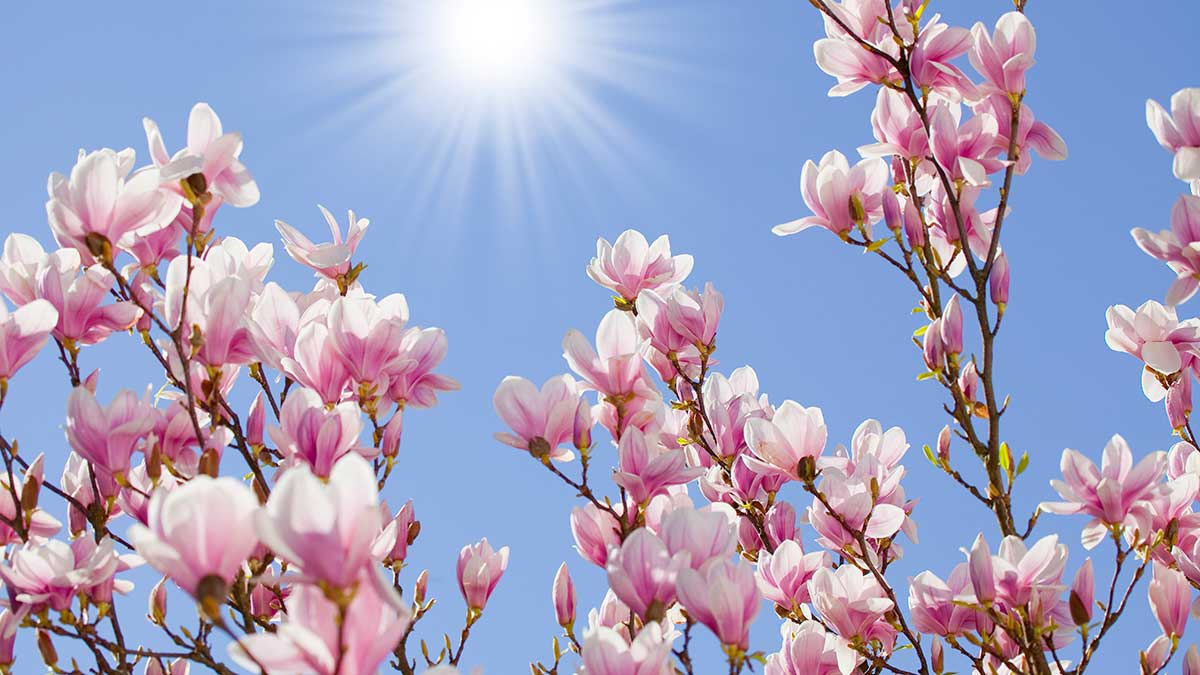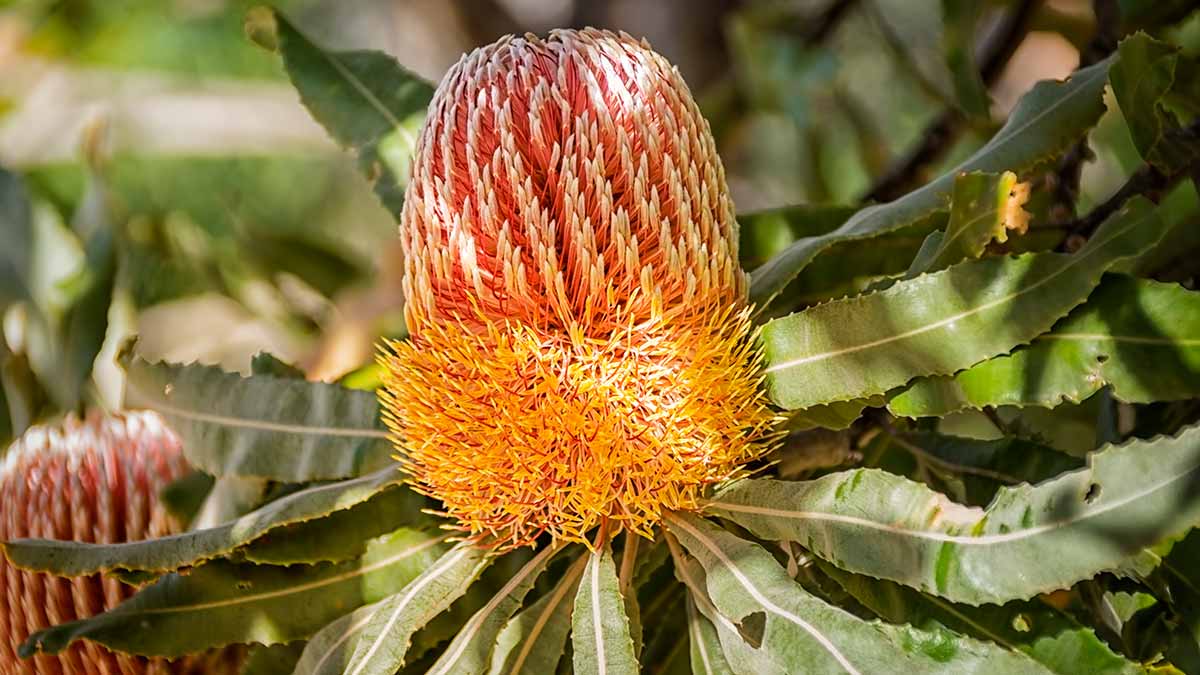Next time you have a free weekend, pack your bag, head down the coast and travel back millions of years in search of our jurassic neighbours.
Jurassic Park: where you can still find prehistoric plants in Australia

Fancy growing a plant once gnawed on by a dinosaur? Find out where you can see these prehistoric plants from the Mesozoic Era in Australia.
The stegosaurus. Neanderthals. The dodo. Once roaming the globe just like us, over 99 per cent of all species that once inhabited Earth are now extinct.
While Australians can’t seem to get enough of dinosaurs - whether it’s finding fossils on a trail walk along the sandy ruins of Inverloch, searching for mythical dinosaur creatures still haunting the Australian Outback or going for a prehistoric dig at Koonwarra, very few people realise that some of these ‘dinosaur plants’ can still be found right in our own backyard.
It’s quite impressive that while the world’s biggest predators – dinosaurs - became extinct at the end of the Cretaceous Period around 65 million years ago, along with 75 per cent of plant and animal species on earth, some plants that date over 250 million years survived, and their descendants still exist today.
We chat with Dr Tonia Cochran, biologist, Curator and Collection Manager at the Inala Jurassic Garden Tasmania, about where you can still find dinosaur plants around the country.
Welcome to the plants before time.

Where to find dinosaur plants in Australia
According to Dr Cochran, the oldest plant groups in the world “include conifers, ferns, and mosses,” which can date anywhere from 200 to 350 million years ago. Coniferous trees typically produce cones and needles over leaves and plants, helping their survival in very cold or dry climates.
Some of these plants from the dinosaur era still thrive in the 21st century, says Dr Cochran, and “are most noticeable and notable in today’s landscape.”
These include:
Magnolias - Cretaceous Period
The deciduous blooms we know today as sweet magnolias can be traced back over 100 million years ago. Mutated from the world’s very first flowers, the ancient magnolia had a range of petals set in concentric rings, evolving to the pink petalled trees that line many Australian homes today.
Pollinated by beetles and wind (bees hadn’t come along just yet), the range of flowers belonging to the magnoliidae family formed part of the herbivore dinosaur diet, as they grew quickly, were tasty (for animals), and provided sustainability for many insects.
Where to find them: In modern times, a magnolia tree can be grown at home, growing up to eight metres high with petals growing to a spectacular 12 cm long.
The Bunya Pine – Jurassic Period
Found around south-eastern and northern Queensland, Dr Cochran advises that the coniferous bunya pine (Araucaria bidwillii) “is a member of the family Araucariaceae, or ancient giant trees”.
Growing up to 50 metres tall, the bunya pine can survive for over 500 years, and even produce large pinecones that weigh up to 10 kilos – and may also provide nutritious goods for humans.
Previously used as food by the dinosaurs, she says that “the edible nuts in these cones are very nutritious and prized as an Indigenous food source... and can sometimes be found in botanic gardens.”
Where to find them: Approximately two and a half hours from the RACV Noosa Resort lies Bunya Mountains National Park in Southern Queensland. Visitors can go on a prehistoric walk through time, as the Park is home to the Bunyan Mountains, which have been standing for over 30 million years.
Illawarra Plum Pine – Triassic Period
An ancient variant of the Araucariaceae (an ancient family of coniferous trees), the Illawarra plum pine (Podocarpus elatus) diverged from the pine tree family over 245 million years ago.
Another coniferous plant, the Illawarra plum pine is commonly found in rainforests, and Dr Cochran says that “as its name suggests, [the plant] produces edible fruits that have a grape-like texture and a sweetish mild pine flavour. It is regarded as one of the best ‘bush tucker' foods and can sometimes be found for sale in local nurseries.”
Growing up to 36 metres high and 1.5 metres wide, the plant produces seed cones, which are edible, as well as the flesh of the stalk, which can be used as a condiment for anything from sauces to fruit compotes.
Where to find them: Seedlings can be purchased from nurseries online (although they won’t grow as large in your backyard). The best place to catch a glimpse is in subtropical rainforest climates across eastern New South Wales and Queensland.
Banksias, Grevilleas, Waratahs and Hakeas - Cretaceous period
Dating back over 100 million years, these plants are part of the 1,660 species that make up the ‘Proteaceae’ family – flowering plants mainly found in the Southern Hemisphere.
“This ancient supercontinent started splitting up in the Jurassic Period to form these landmasses we know today,” says Dr Cochran.
As native Australian plants, she says that the Proteaceae family can also be found “across the southern continents of South Africa, South America, Australia and New Zealand, also known as the ‘Gondwanaland distribution’.”
One variation of the Proteaceae family that people may recognise easily is the humble macadamia nut, which grows in southern Queensland and northern NSW and is what Dr Cochran calls “our most famous ‘bush tucker’ food.”
Where to find them: Dr Cochran says it is surprisingly easy, as “many people would already grow these in their backyard.” She also has some lesser-known Australian Proteaceae at her Inala Jurassic Garden, and says they are also easy to grow and “commonly available in plant nurseries.”
Monkey Puzzle Tree – Jurassic Period
With a reptilian appearance of spiky leaves and hairy cones, the dioecious monkey puzzle tree, Araucaria Araucana, has been around for over 200 million years, with an individual plant holding an average life expectancy of 1,300 years.
Allegedly named by the British for being ‘a puzzle for a monkey to climb’ due to its spiky edges, it originated in what is now known as Argentina and Chile (where it is the national tree) during the Jurassic Period.
As one of the main food sources for herbivores, they can grow to 45 metres high and seven metres wide. The plant itself evolved to establish sharp leaves, which fended off the plant-eating dinosaurs.
Where to find them: Surviving the extinction, while hard to find, the monkey puzzle tree can still be found around Victoria in areas such as Mount Macedon, Mount Dandenong and Trentham, although they are considered endangered and incredibly rare.
Wollemi Pine - Jurassic Period
The famed 'dinosaur tree' was thought to be extinct for over 100 million years, until a chance find in Wollemi National Park near Sydney, New South Wales in 1994. Dr Cochran says the Wollemi pine is “one of the oldest and rarest plants on earth and also a member of the ‘dinosaur tree’ family Araucariaceae, dating back 200 million years to the early Jurassic Period.”
The Wollemi pine (Wollemia nobilis) used to cover Australia. It was found the trees could essentially be ‘cloned’ to eradicate their extinction, with Wollemi pine seedlings now available for sale around the world.
Dr Cochran says that “royalties from the sale of Wollemi Pines support the conservation of this species as well as other rare and endangered plants.”
Now listed as a UNESCO World Heritage-listed site, the Wollemi pines at Wollemi National Park can grow up to 39 metres high in the wild (and up to 50 cm in a potted plant in your backyard) – although finding the pine trees themselves may be tricky.
The exact location of the 200 or so dinosaur trees is not disclosed to the public to protect them from human interaction and extinction.
Where to find them: These days, the prehistoric plants can only be found in The Wollemi National Park in the northern Blue Mountains, or at Dr Cochran’s Inala Jurassic Garden on Bruny Island in Tasmania.
Dutchman’s Pipe – Cretaceous Period
Evolving from the first flowering plants roughly 125 million years ago, the Dutchman’s Pipe (Aristolochia elegans) is a weed that managed to survive the asteroid that saw the extiniction of the dinosaurs and is still present today, with more than 500 different species of the plant roaming the Earth.
A dangerous and deciduous climbing vine named for its likeness to – you guessed it – a dutchman’s pipe, the toxic plant with twisting stems, curved leaves, and red-tinged dropping flowers is a prehistoric plant, or weed, that has been around since the Cretaceous Period - roughly 65 to 142 million years ago.
Where to find them: These days, it is more frequently found as an environmental weed in Queensland and northern New South Wales. As a toxic vine, the Dutchman’s Pipe is listed as a restricted invasive plant by Biosecurity Queensland, as it is poisonous to humans, livestock, and butterflies and ‘cannot be given away, sold, or released into the environment.’
Looks like the T-Rex had a fierce competitor for the most ferocious predator.
Horsetail weed - Carboniferous Period
Older than the dinosaurs and said to originate in the Carboniferous Period over 350 million years ago, Horsetail (Equisetum Arvense) was a dominant fossil during the dinosaur age.
The Horsetail is a green weed growing from the ground in a bottle-brush shape, and used to grow to the size of a pine tree. It may have been part of the dinosaur diet, although the paleontology community argues that they may have worn down the teeth of any herbivore that got its chompers around its rough exterior.
Where to find them: These days, while listed as a problematic weed that can be toxic to livestock and other flora and fauna in New South Wales, it is harvested for medicinal use, as it contains silica, commonly used for mineral depletion in areas including hair, skin, nails, bone health and pain reduction.









